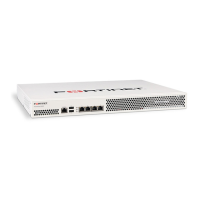Fortinet Technologies Inc. Page 106 FortiVoice 200D/200D-T v2.0 MR1 CLI Reference
trunk office-peer
If you have remote offices equipped with VoIP network, use this command to configure office
peer trunks so that offices can call each other as if they are local extensions.
Syntax
config trunk office-peer
edit <peer_name>
set auth-incoming {enable | disable}
set auth-outgoing {enable | disable}
set port <port_num>
set remote-server <ip/name_str>
set sip-setting <name>
set status {enable | disable}
set sync-directory {enable | disable}
set type {sip | iax2}
end
Variable Description Default
<peer_name> Enter a name for the trunk.
auth-incoming {enable |
disable}
Enable to authenticate incoming calls. disable
auth-outgoing {enable |
disable}
Enable to authenticate outgoing calls. enable
port <port_num> Enter the port number for VoIP network on the remote
office’s PBX.
5060
remote-server
<ip/name_str>
Enter the domain name or IP address of the remote
office’s PBX.
sip-setting <name> Enter the SIP profile for the trunk.
For more information, see “system sip-setting” on
page 101.
sip_setting_
default
status {enable | disable} Enable to activate the trunk. enable
sync-directory {enable |
disable}
Enable to obtain the phone directory from this office peer
on this trunk.
This option only works if the PBX of the remote office is a
FortiVoice unit and sync-directory is enabled on the
remote unit.
disable
type {sip | iax2} Enter the trunk type. sip

